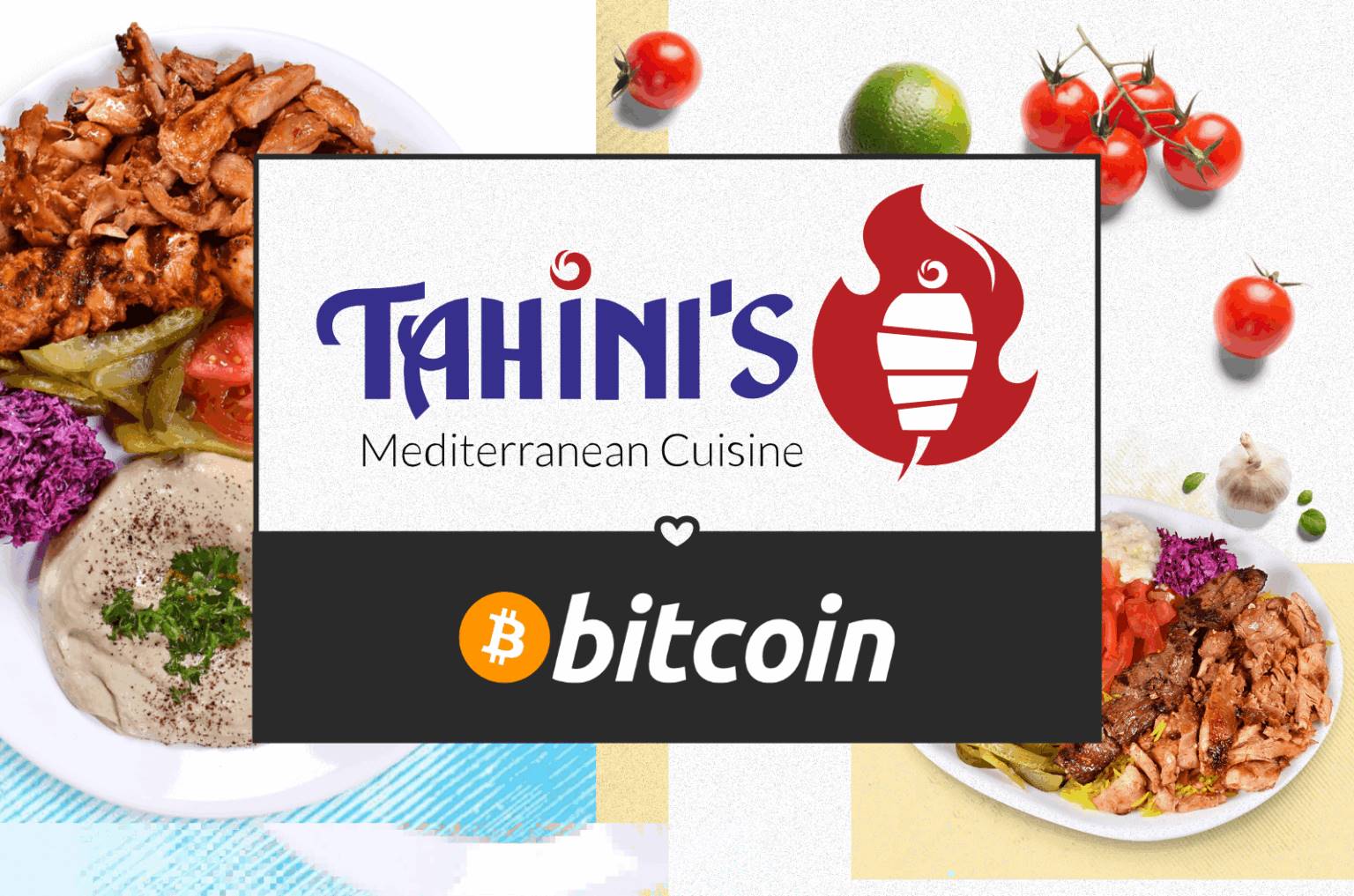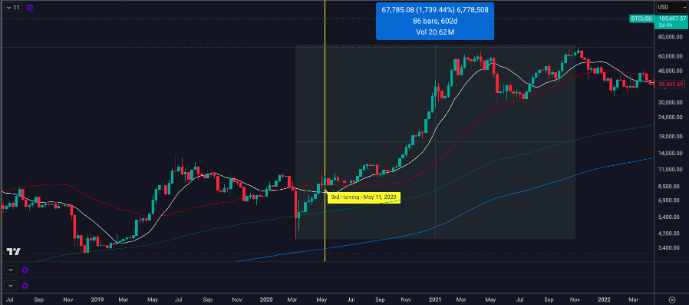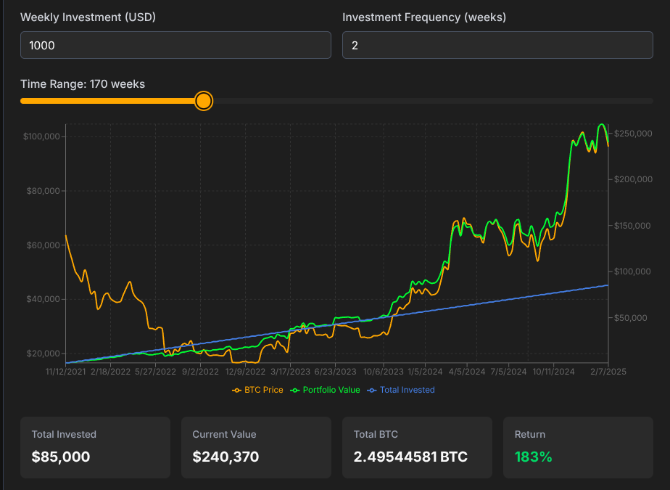“Buy every month, buy every month. The ups and downs don't matter.”
Author: Juan Galt
Translated by: Deep Tide TechFlow
Tahini's, a Canadian fast-food chain, boldly embraced Bitcoin in 2020 to combat inflation and compete with industry giants like McDonald's. Here is their Bitcoin financial strategy.
Tahini's is a Canadian fast-food chain focused on Mediterranean and Middle Eastern cuisine. Since integrating Bitcoin into its business in 2020, it has continuously optimized its strategy. Today, Bitcoin accounts for over 70% of its reserves, a decision that has played a key role in its expansion to 62 restaurants in just over a decade.

“We are constantly putting more funds into Bitcoin.” Omar Hamam, CEO and co-founder of Tahini's, said in an interview with Bitcoin Magazine. Omar and his brother Aly Hamam opened their first restaurant in London, Ontario, in 2012. Since then, Tahini's has grown to 62 locations nationwide. In 2020, they were inspired by Michael Saylor to adopt an early Bitcoin financial strategy. This bold move provided them with a capital reserve that enabled them to compete with fast-food industry giants.
“We are competing with McDonald's and Chipotle,” Omar stated, “These companies have funds that are more than a hundred times that of Tahini's. So, having such an advantage—a financial strategy that makes our financial situation more robust and allows us to preserve wealth across time and space—is the best decision we made for the business.”
During its development, the company implemented several innovative strategies, including deploying Bitcoin ATMs in many franchise locations and a brand-new media strategy. According to Aly, this media strategy has brought them three billion views across all social media platforms over the past five years, including a YouTube channel with over 3.2 million subscribers. Of course, their Bitcoin financial strategy is also a highlight.

Aly's Obsession with Bitcoin: From Egyptian Currency Devaluation to Post-Pandemic Inspiration
Tahini's Bitcoin strategy is primarily driven by Aly Hamam. His inspiration comes from the profound impact his family suffered due to the significant devaluation of the Egyptian pound over the past 20 years. Ongoing hyperinflation hit his family hard, and this experience led him to discover Bitcoin's potential during the market crash in March 2020.
“I come from Egypt, and over the past twenty years, I have witnessed the Egyptian pound devalue by about 85%. I saw my family struggle, and my parents were also struggling. Their savings were almost wiped out during those years in Egypt. Sometimes, in Egypt, this situation can happen like a lightning crash. The government might devalue the currency by 50% in a month.” Aly recalled.
In March 2020, as the pandemic triggered market panic, Bitcoin's price plummeted from a high of $10,000 to $4,000. “I bought a little at that time, purely because it had dropped so much, I thought, why not buy a bit and see what happens? … But as I delved deeper into my research, I fell completely down the Bitcoin 'rabbit hole.' In the following months, I kept buying more Bitcoin. When you first encounter Bitcoin, for the first three months, it occupies almost every corner of your life—listening to podcasts, reading, constantly buying.” Aly explained.
After the market crash, Bitcoin rebounded to around $10,000 and consolidated around that price for several months. Meanwhile, governments around the world injected trillions of dollars into the economy to combat the pandemic. The U.S. lowered interest rates to zero, and Canada began distributing pandemic relief funds to eligible residents. Omar recalled, “The government was just printing money non-stop. And it wasn't just the Canadian government; almost all governments were doing this. So, we knew that inflation was coming.” At the same time, Bitcoin's block reward halving also occurred during that period, a fundamental factor that contributed to one of the most spectacular bull markets in Bitcoin's history.

This was the era when Michael Saylor entered the Bitcoin space and became one of the most prominent Bitcoin advocates. However, Saylor's talks and documents on how to build a corporate Bitcoin strategy and how to persuade boards or other business partners were just beginning to gain popularity in podcasts, and Bitcoin financial strategies were still in their infancy.
Once Aly was fully “in” Bitcoin, he began promoting it to his family. “I started promoting Bitcoin to my business partners, brothers, and cousins, and they began to buy it personally.” Aly explained that personal purchases of Bitcoin are straightforward, but using company reserves is much more challenging. “It's not a quick process. I wanted us to put the company's funds into Bitcoin, but they hesitated. 'This is a crazy idea.' 'This way or that way,' we kept discussing back and forth until Michael Saylor announced his first purchase. I had already prepared all the accounts and groundwork. So, when Saylor bought his first batch of Bitcoin, it pushed us. A week later, we put all the company's funds into Bitcoin.”
Purchase Price, Regular Investment Strategy, and Perseverance in a Bear Market
Tahini's Bitcoin investment strategy differs from today's publicly traded companies, which issue stocks (and other financial instruments) to buy Bitcoin and increase reserves. As a private company that began accumulating Bitcoin before the U.S. approved ETFs, Tahini's took a simpler approach: buy Bitcoin as reasonably as possible every month, never stopping. According to Omar, Bitcoin now accounts for over 70% of the company's reserves.
They timed their purchases well, starting when Bitcoin was around $10,000. However, the so-called “Dollar-Cost Averaging” (DCA) strategy works well at any price, even in a bear market.

For example, if you invested $1,000 every two weeks to buy Bitcoin at the peak of the 2021 bull market—when the price was close to $70,000—each time you bought at a lower price, you would lower your average purchase price. The result is that when the bear market ends—say, when the price exceeds $30,000—you would break even and be prepared for the upcoming bull market. The only requirement is to have a long-term investment mindset.
“Buy every month, buy every month. The ups and downs don't matter. I know this sounds too simple, but in reality, this is the only way to do it. Right? You just buy, don't try to outsmart the system unless you're really good at it. Set aside a portion of funds every month, and it will work. If you look back over the past four years, you'll find your investment has multiplied by 2 to 30 times.” Omar explained. He added, “I've had conversations like this with many people. Friends, family, everyone. I always tell them, listen, start from somewhere. Don't invest too much, see how it goes. For example, you invest $1,000, watch how it changes. If next year that $1,000 becomes $1,200 or $1,500. Imagine what would happen if you had $100,000 or $1,000,000?”
While there are no strict rules about the best frequency for a Bitcoin regular investment strategy, whether for individuals or businesses, Tahini's chose to buy monthly because it fits their accounting process. “Every month we have a profit and loss statement. Every month we see our profits and losses. At the end of the month, we decide, okay, we want to set aside this much.” Omar explained.
As for the investment amount, Omar explained that they do not invest a fixed or percentage-based amount. “It also depends on whether we are investing in the business this month? How are our expenses? Are there any large payments? Sometimes there are many expenses at the end of the year. So you have monthly highs and lows, etc., but the key is to keep putting money in. How much to invest each month is something you need to decide.”
Bitcoin: Sell or Collateralize? Tahini's Financial Strategy and Payment Challenges
In terms of how to realize Bitcoin liquidity, Tahini's chose a straightforward strategy. When the timing is right and business needs are pressing, they sell a portion of their Bitcoin and then buy it back later according to the standard DCA strategy, integrating capital gains tax into their accounting process. Omar explained, “When you need to reinvest, you always need funds. For example, if you want to conduct a large marketing campaign as a chain, right? You need to tap into those reserves. With funds, you have power. The more funds you have, the more freedom you have to make the right decisions for the company, rather than just doing what you can afford.”
Challenges of Accepting Bitcoin Payments and Integrating POS Systems
As the first step in integrating Bitcoin, Tahini's explored the possibility of accepting Bitcoin as payment in their restaurants. However, a series of challenges forced them to pivot. Many of these challenges still exist in businesses worldwide, involving the closed-source and walled-garden models of popular payment processing systems.
Omar explained, “Many of these point-of-sale system companies handle payment processing themselves, and their systems lack the capability to accept Bitcoin.” Most of these systems are closed-source, with strict API limitations, making it difficult to integrate Bitcoin into the economy, which has been a barrier to Bitcoin payment adoption since its inception.
However, the friction for merchants is not just a barrier of POS systems; the list of functionalities required for merchants to remain competitive is very complex, and most Bitcoin payment systems still lag behind:
“POS systems are not just about payments. They also involve how to build menus in the backend. POS systems provide reports, analyze what you sold, when you sold it, how the store is operating, which times are busy, which times are not, and how to request what you ordered. It's very complex, right? So payment is just the last piece of the puzzle. Therefore, when we choose a POS system, it's not just about the payment system; it also involves their functionalities and the pros and cons of the system.”
Additionally, integrating Bitcoin into POS systems also requires support for fiat currencies to be viable in today's ordinary merchants, further raising the barriers to entry and competition.
As a result, Tahini's chose the next best option: they partnered with the Canadian Bitcoin ATM company Bitcoin Well to install Bitcoin ATMs in 10 restaurants, opting to receive all profits from the machines in Bitcoin and allocate them to independent accounts for each restaurant. Although Aly reported that these ATMs generate only about CAD 250 in revenue each month, since 2021, these “sats flows” (as some in the industry call them) have accumulated, and with the rise in Bitcoin prices, each restaurant now holds over CAD 40,000 in Bitcoin, which is quite significant.
Nevertheless, Omar remains optimistic about overcoming these obstacles, as interest in Bitcoin payments is stronger than ever. “I think Bitcoin is growing rapidly, many companies are adopting it, and people are becoming more knowledgeable about Bitcoin, and their awareness of Bitcoin is increasing. So, I think it's just a matter of time.”
免责声明:本文章仅代表作者个人观点,不代表本平台的立场和观点。本文章仅供信息分享,不构成对任何人的任何投资建议。用户与作者之间的任何争议,与本平台无关。如网页中刊载的文章或图片涉及侵权,请提供相关的权利证明和身份证明发送邮件到support@aicoin.com,本平台相关工作人员将会进行核查。




